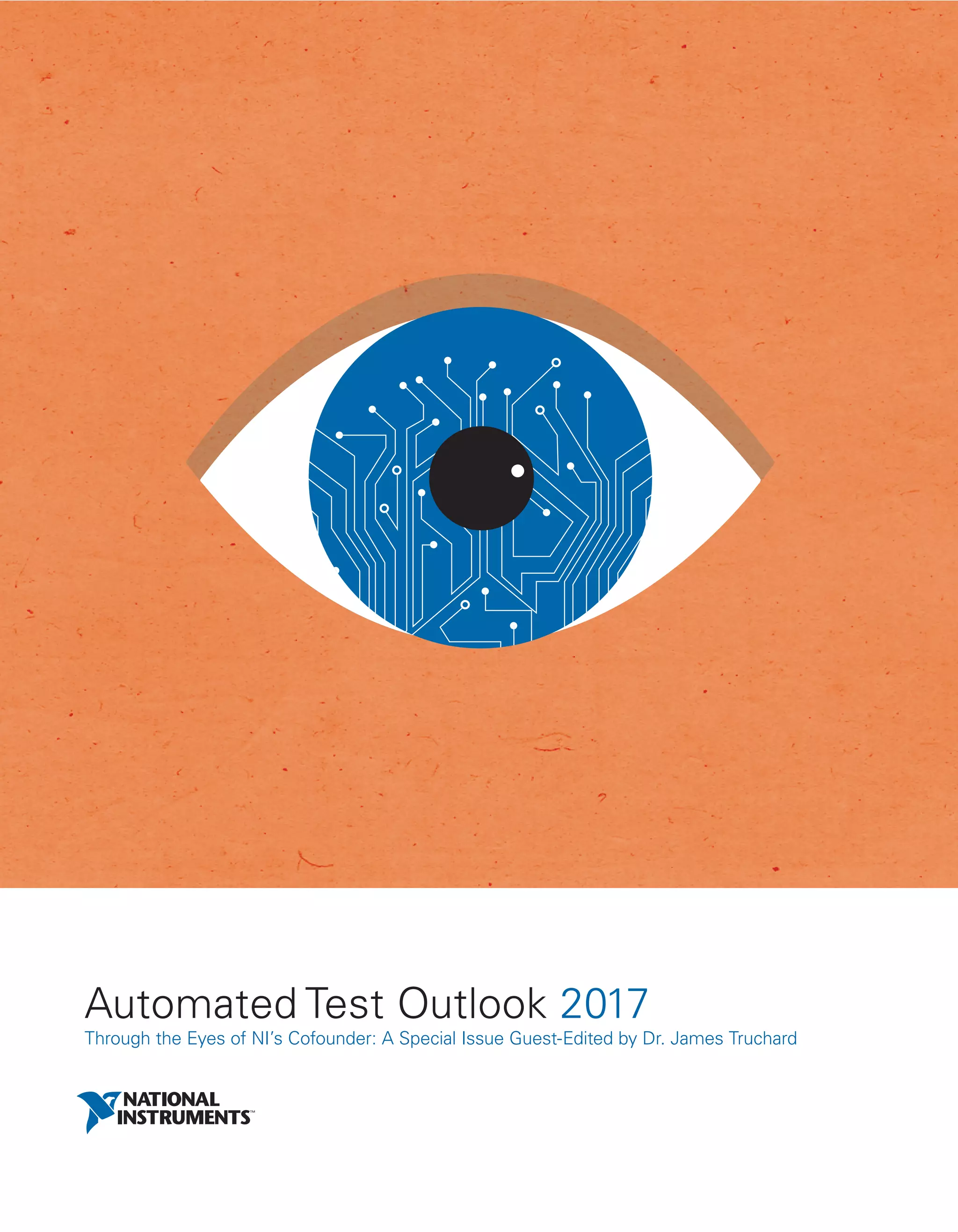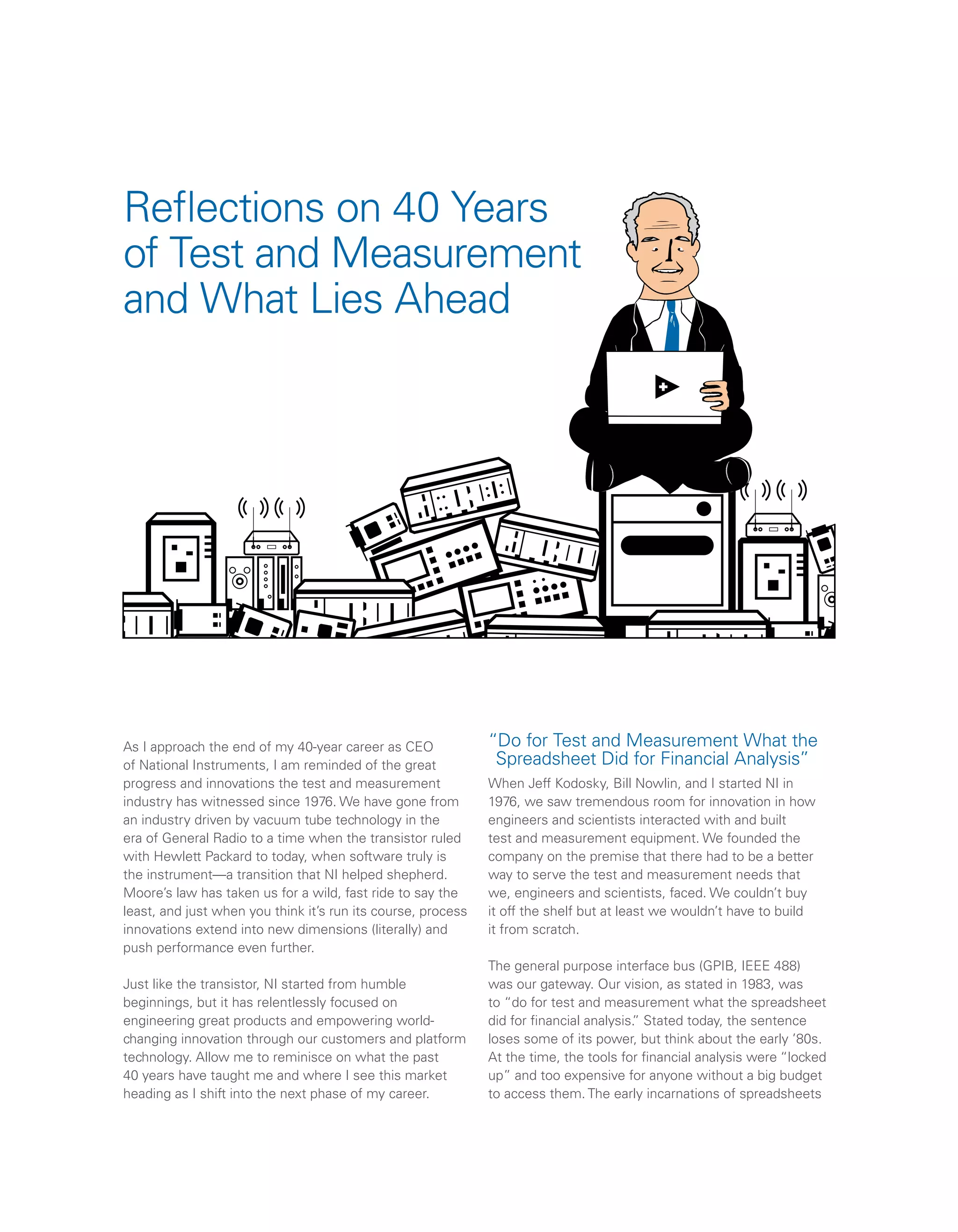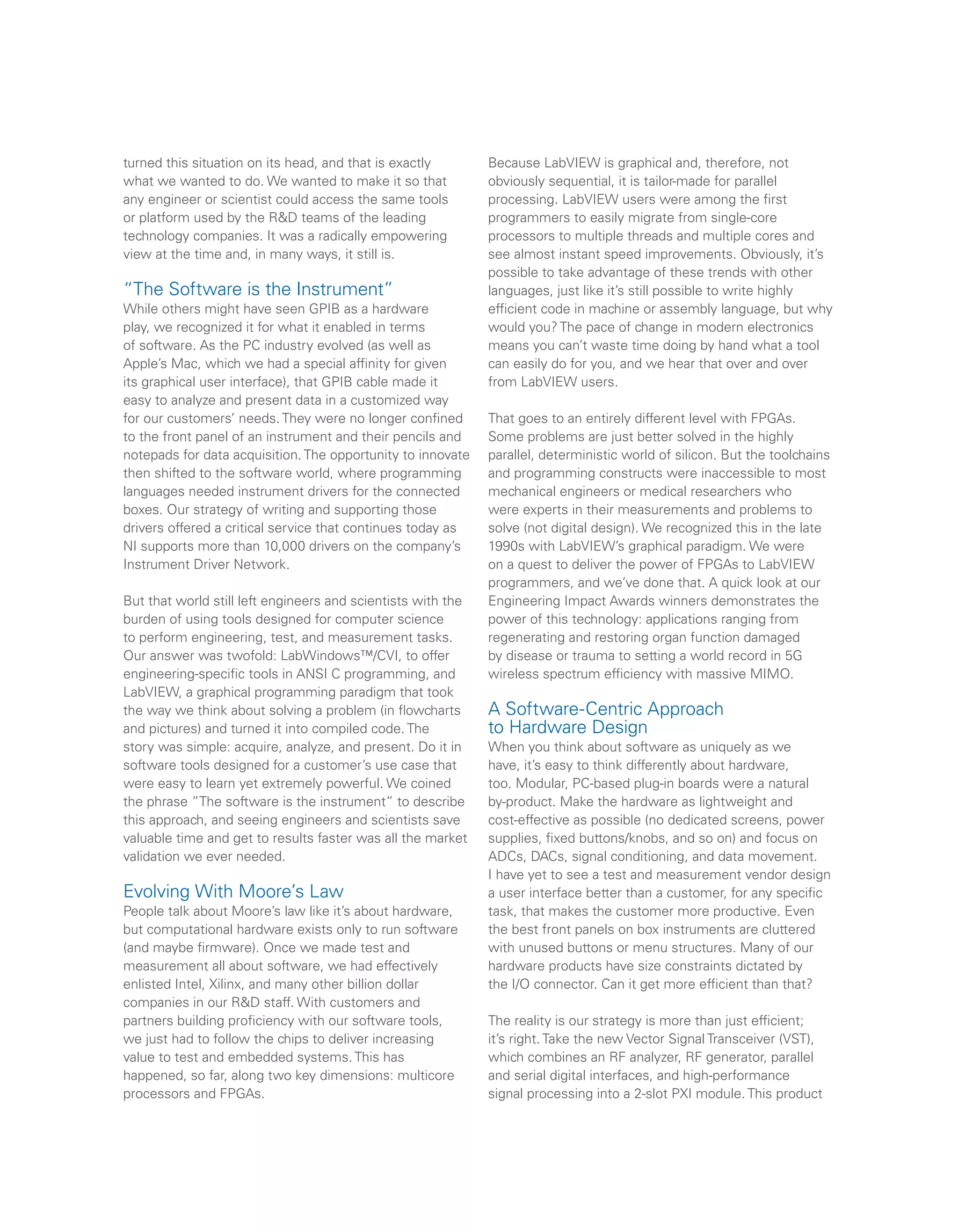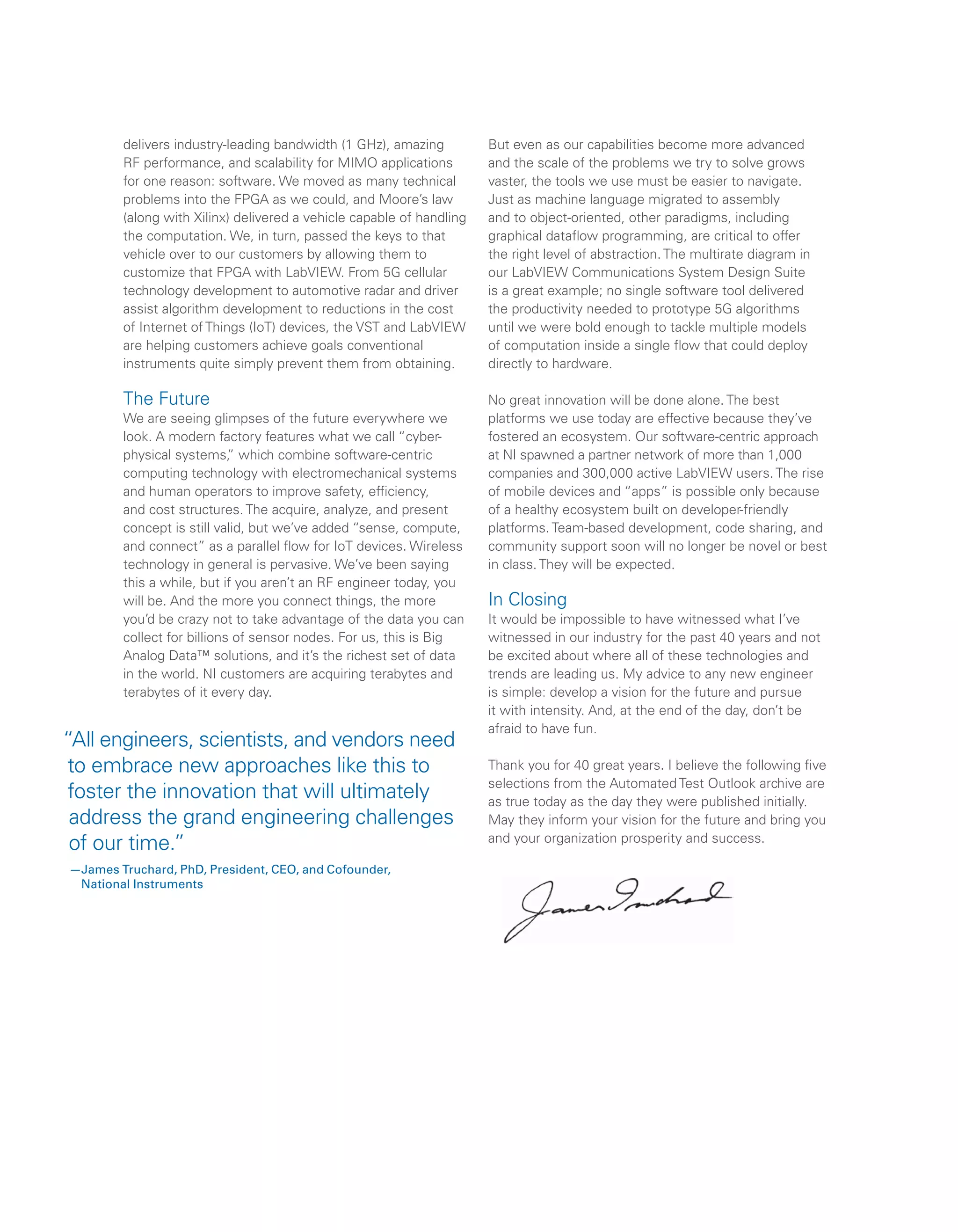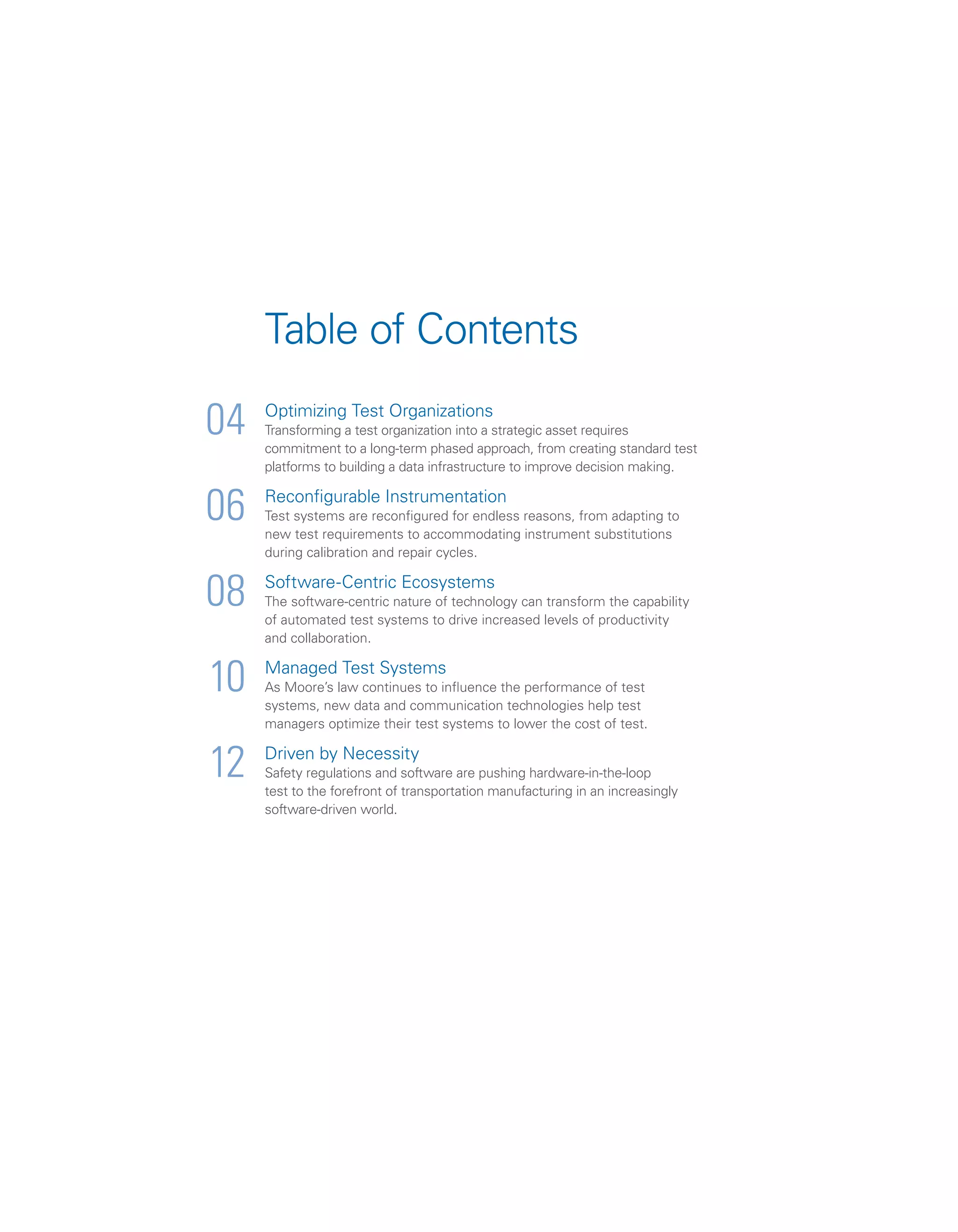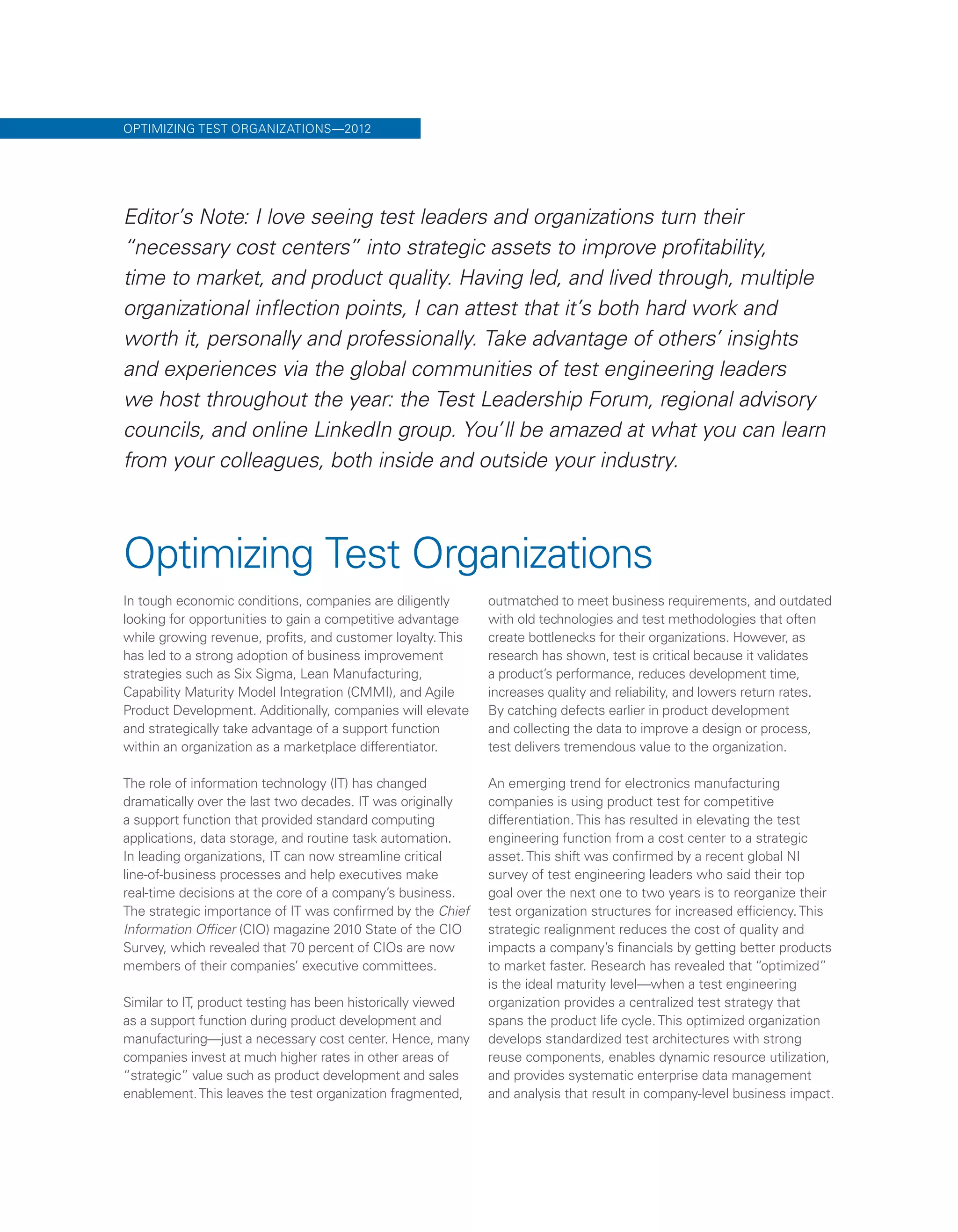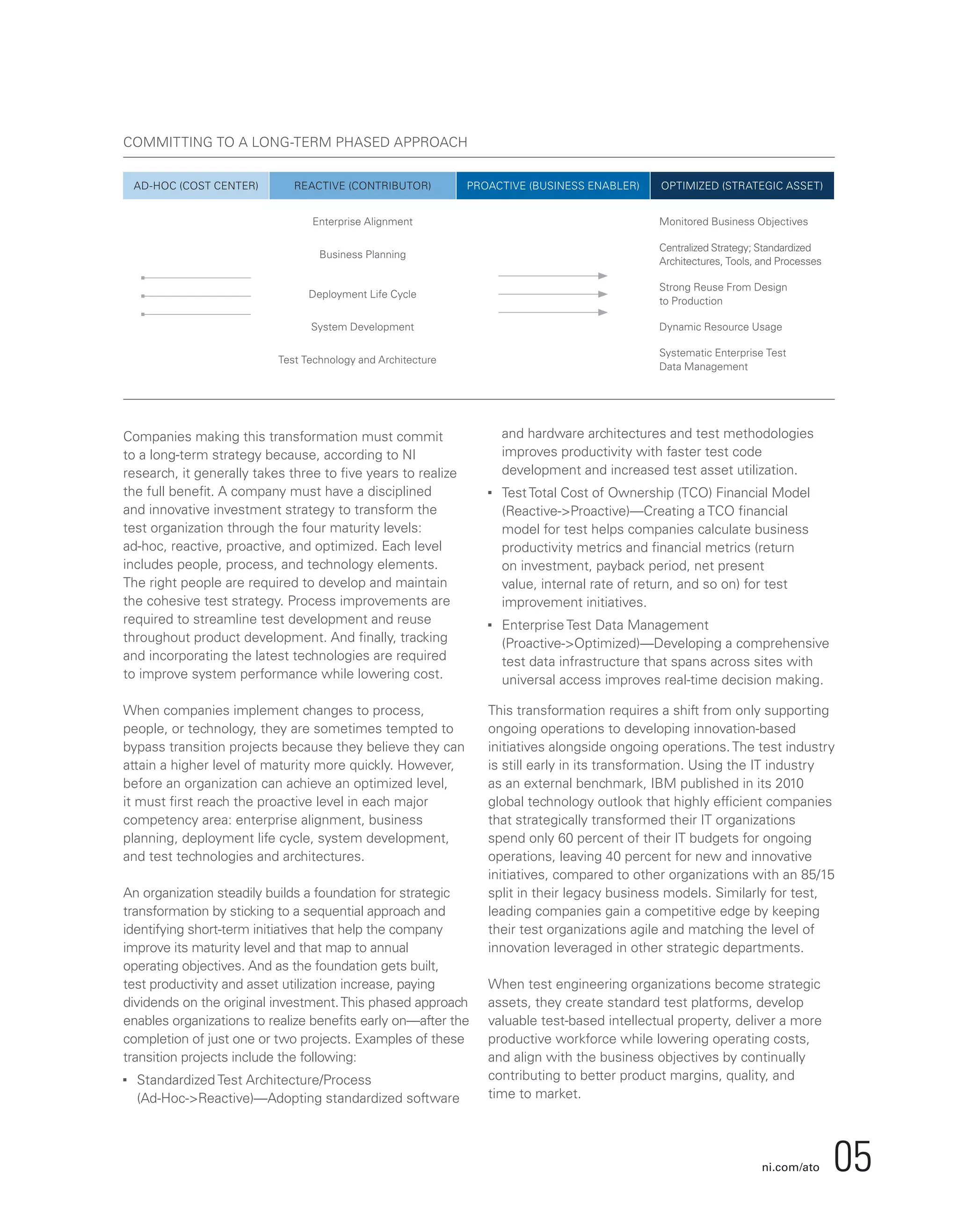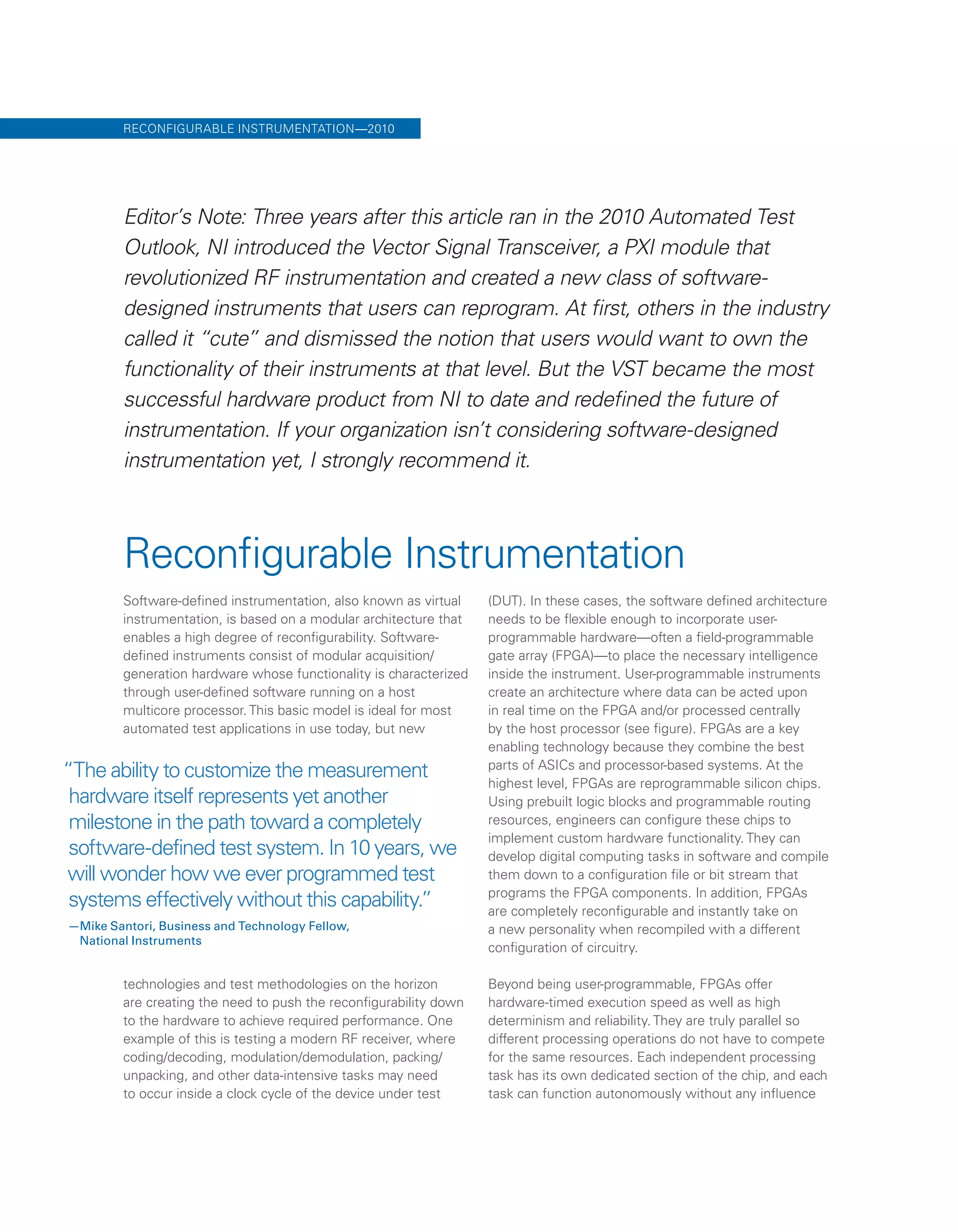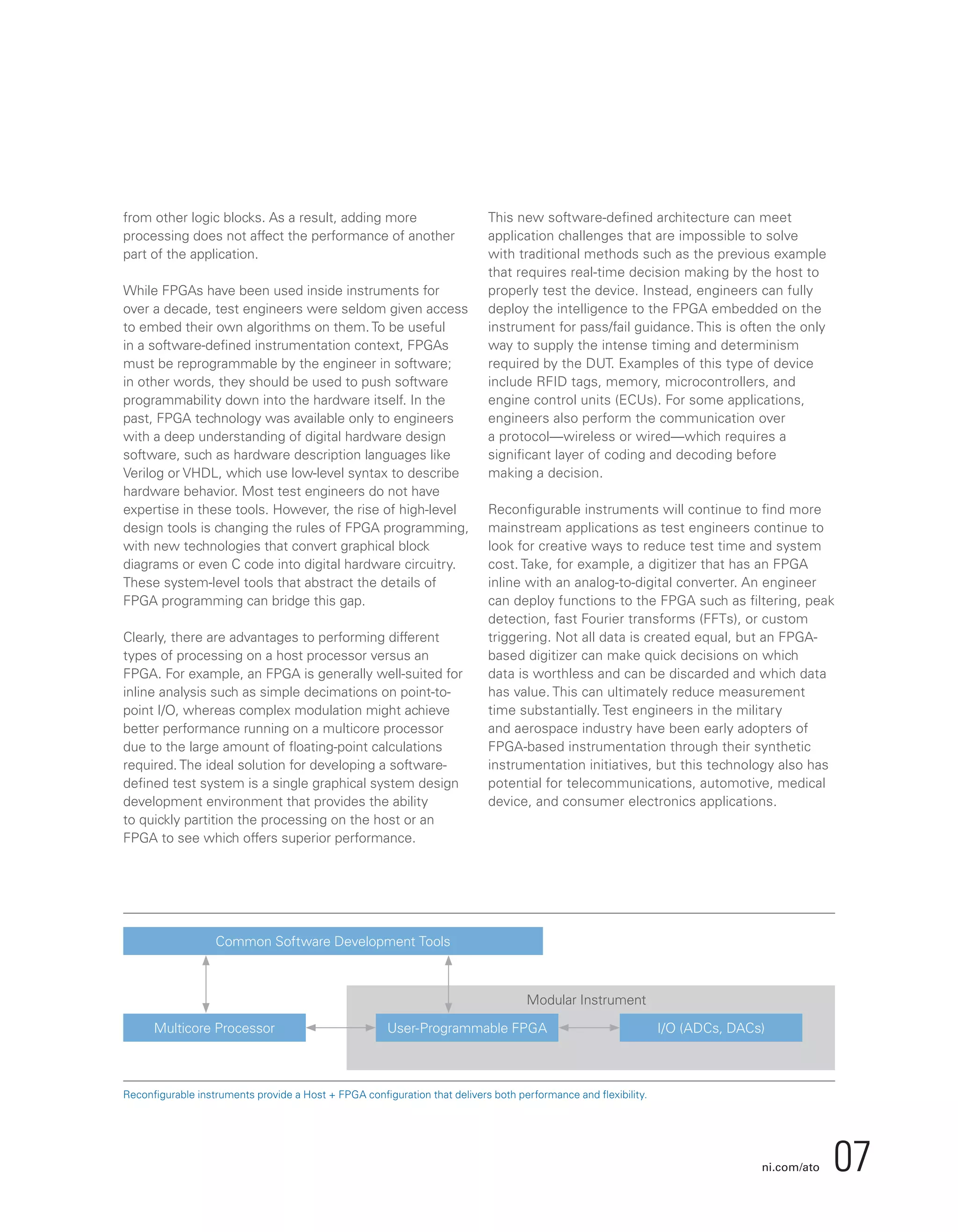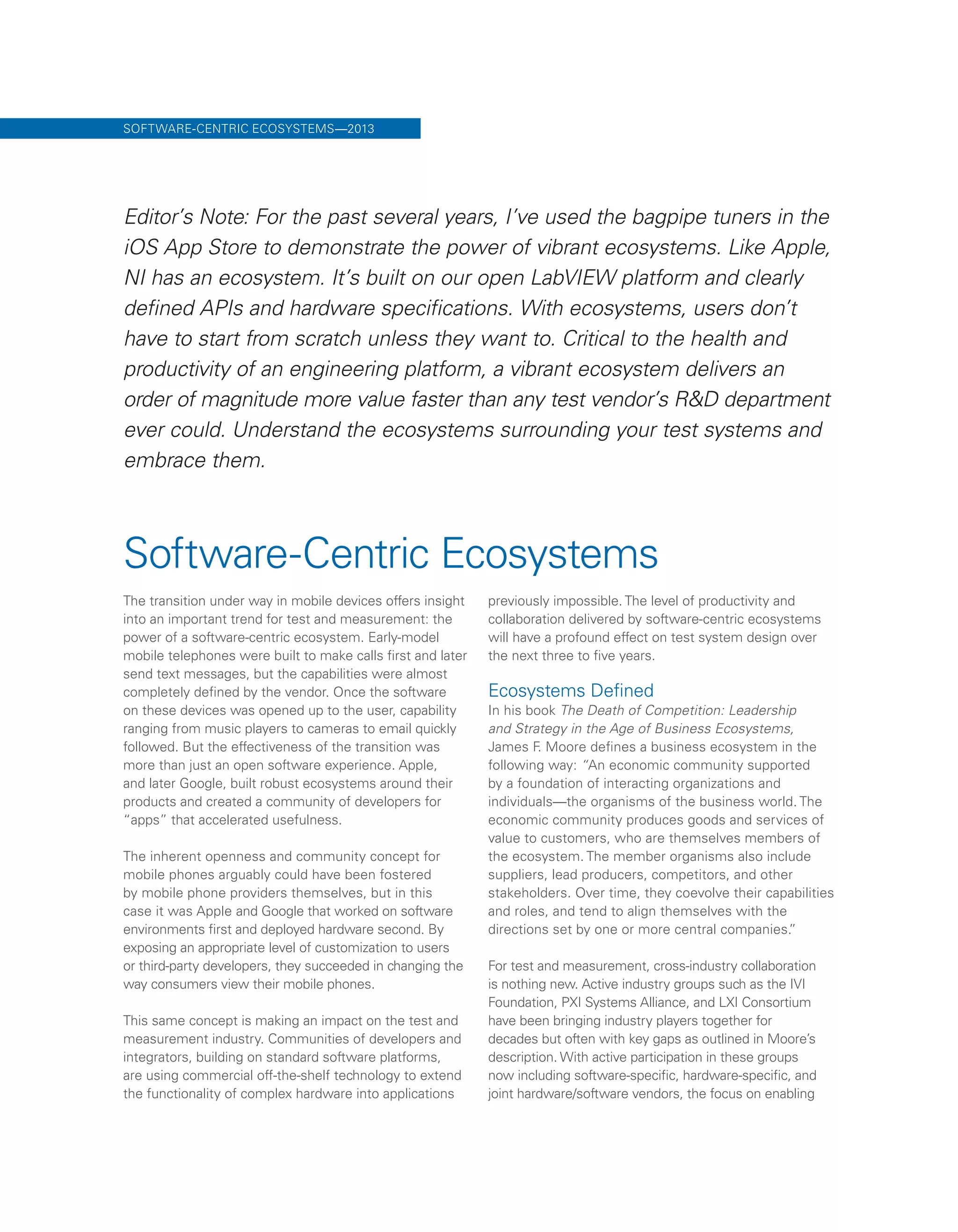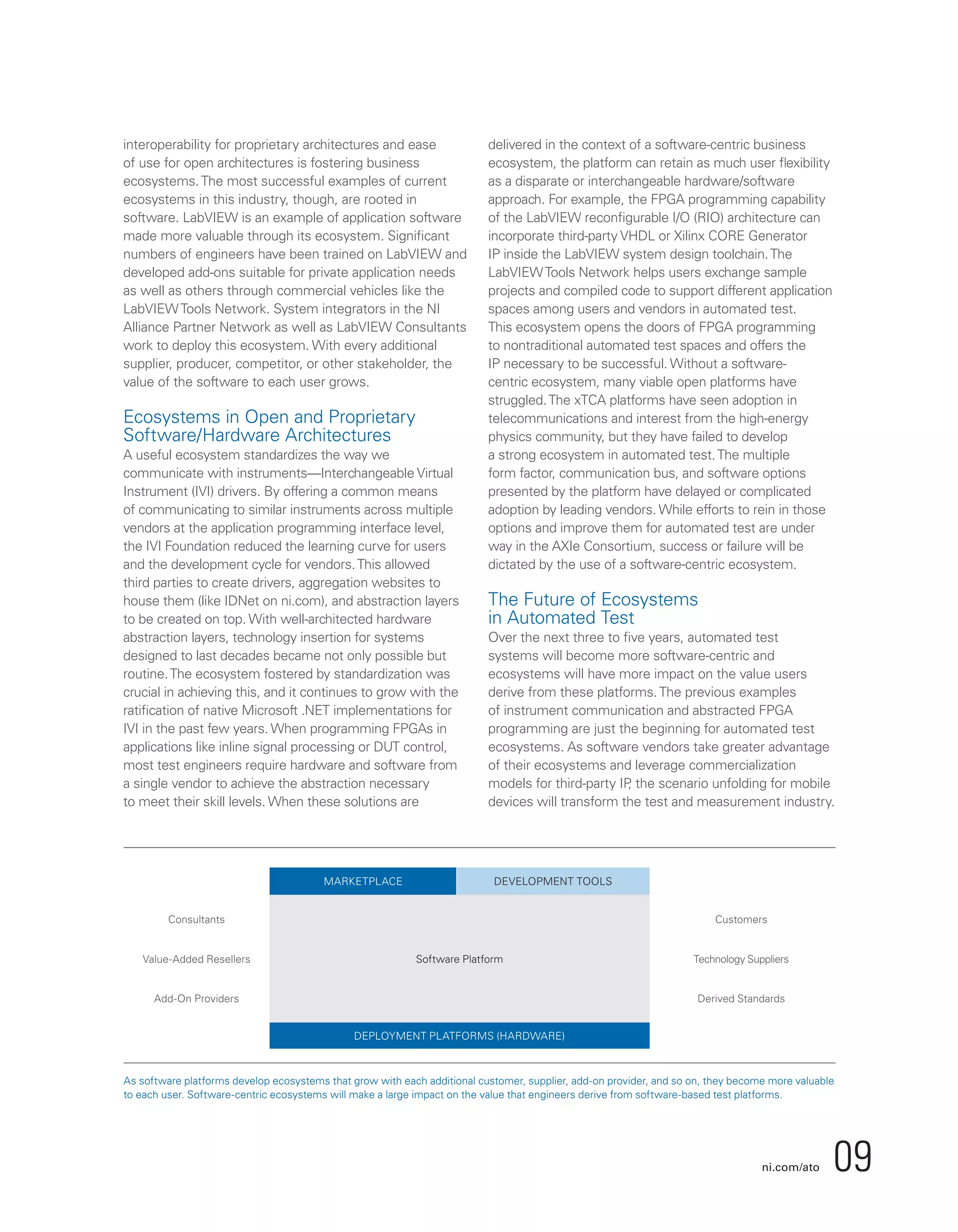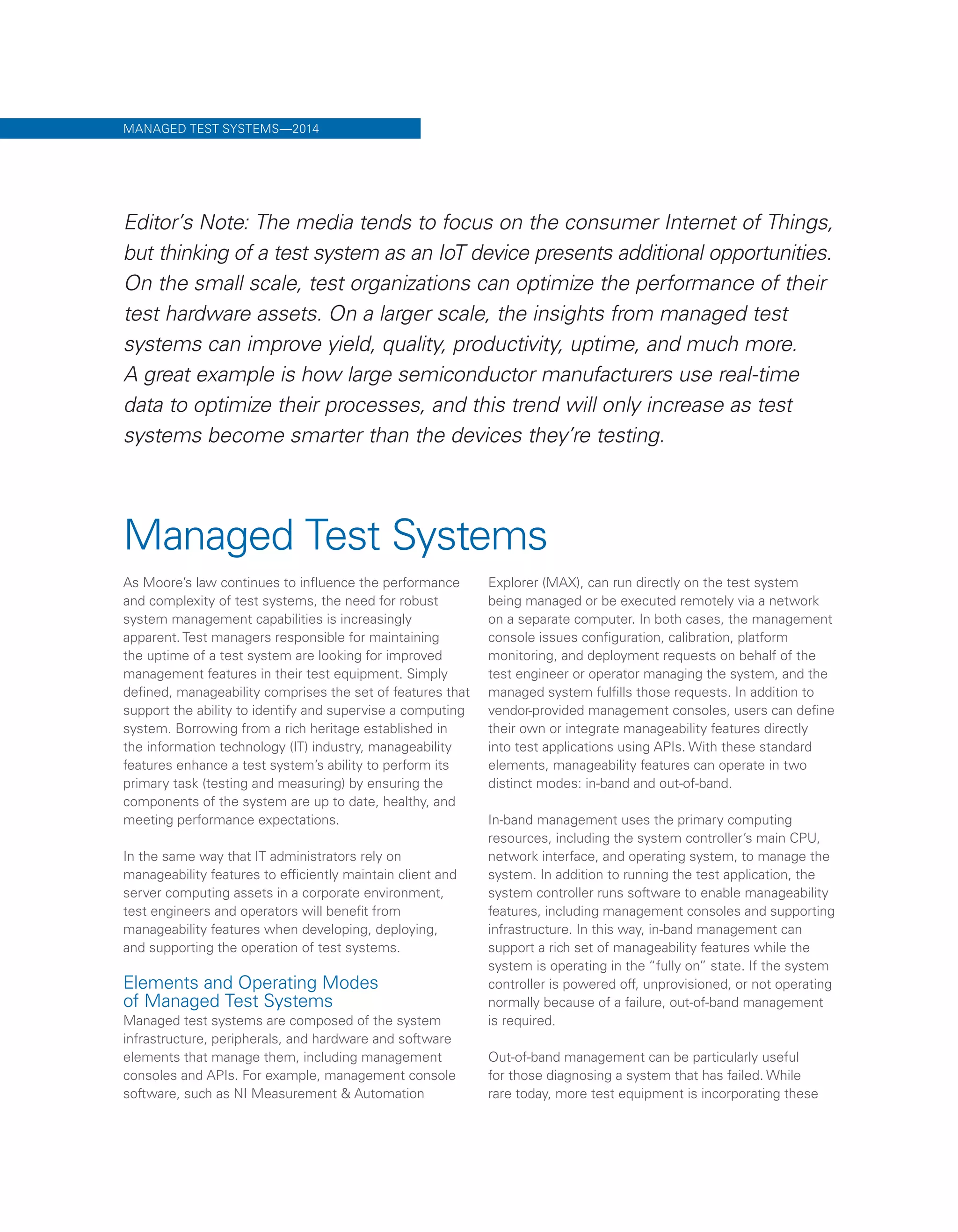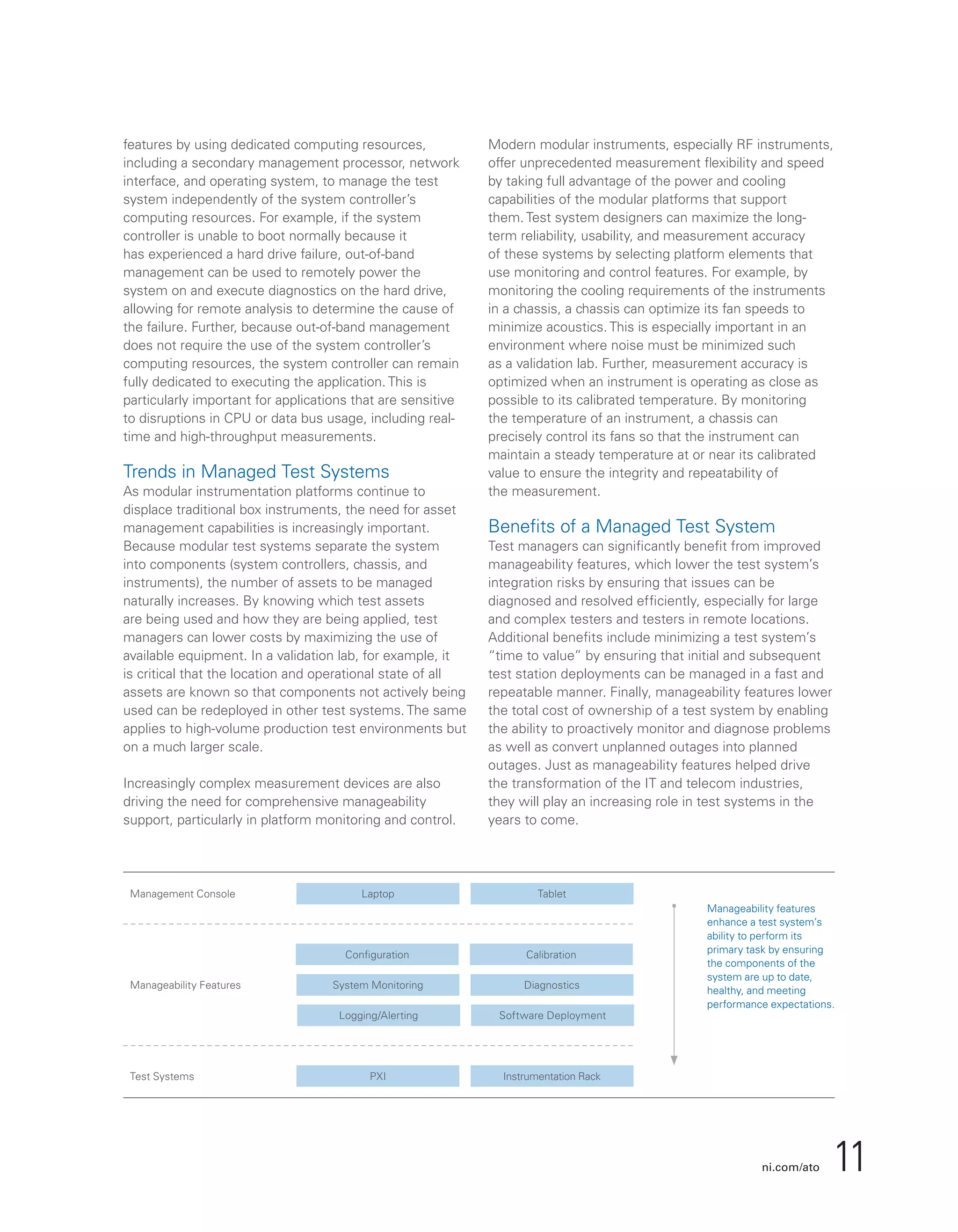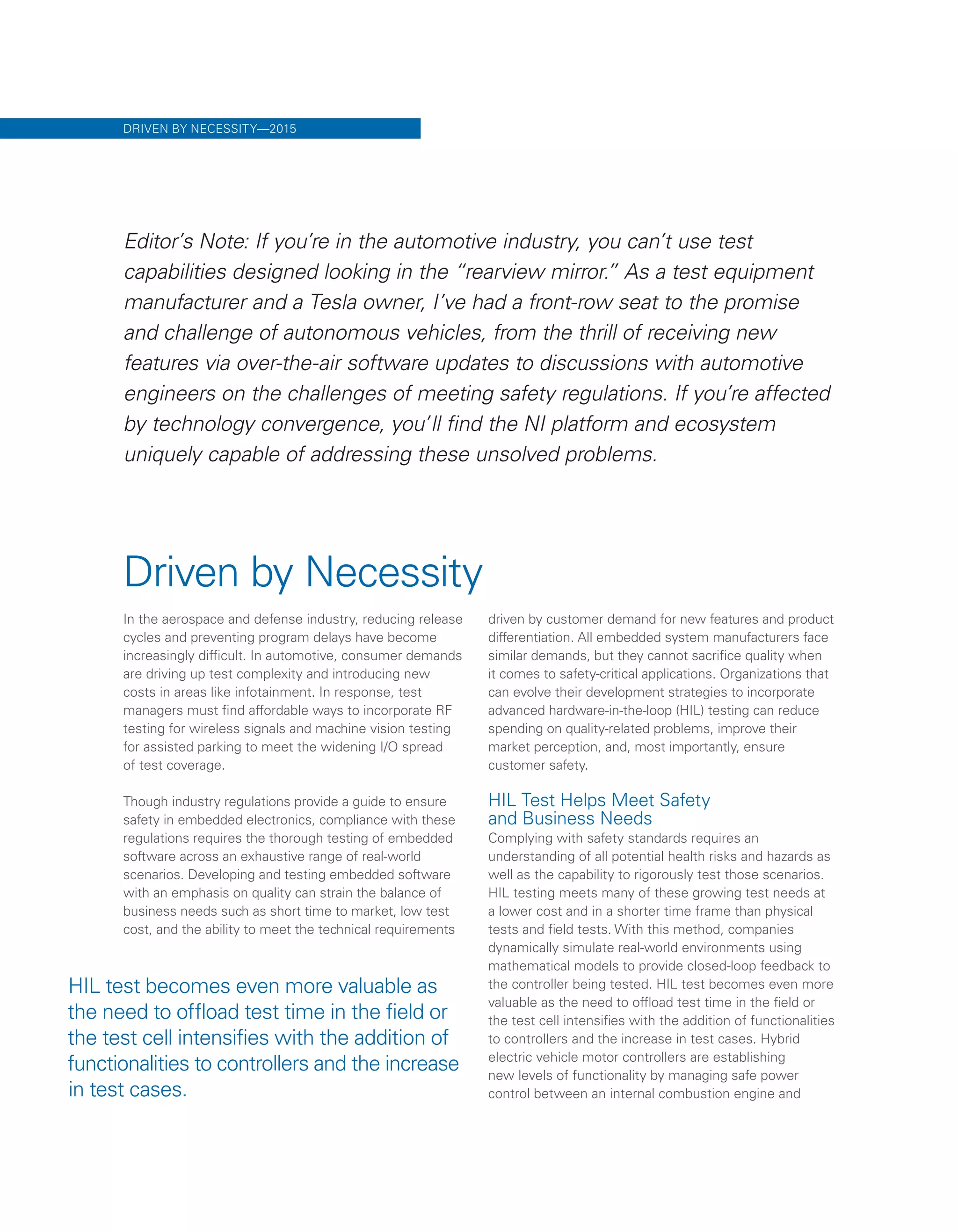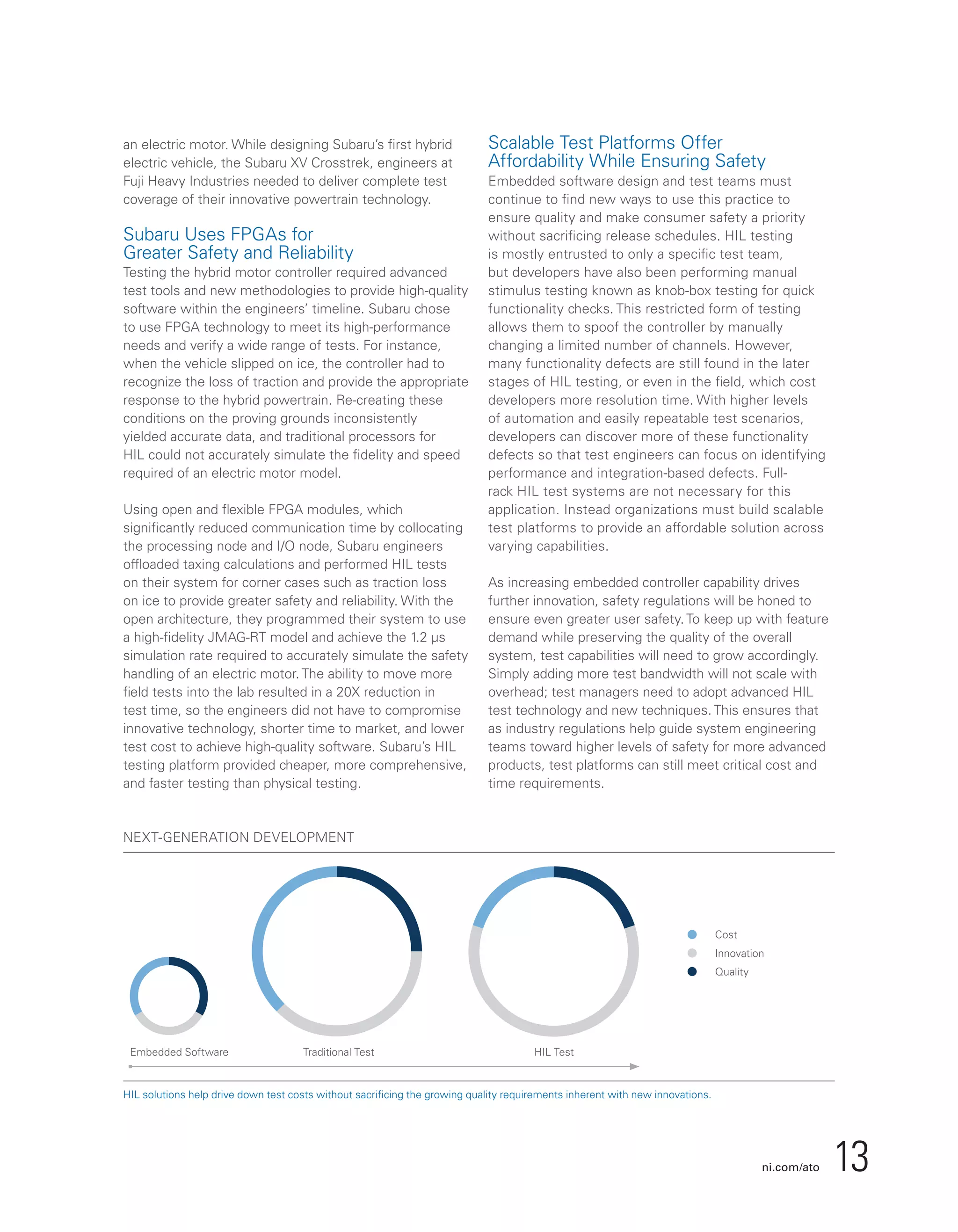National Instruments' cofounder reflects on 40 years in test and measurement and discusses the future of the industry. Key points:
- NI helped transition the industry from hardware-focused to software-centric, with tools like LabVIEW and the philosophy that "the software is the instrument."
- Moore's Law and parallel computing allowed NI to leverage advances in hardware to continually improve software tools and deliver more value.
- Emerging technologies like IoT, wireless, and data analytics will further drive the industry, and NI is well-positioned with its software-centric approach and ecosystem of partners.
